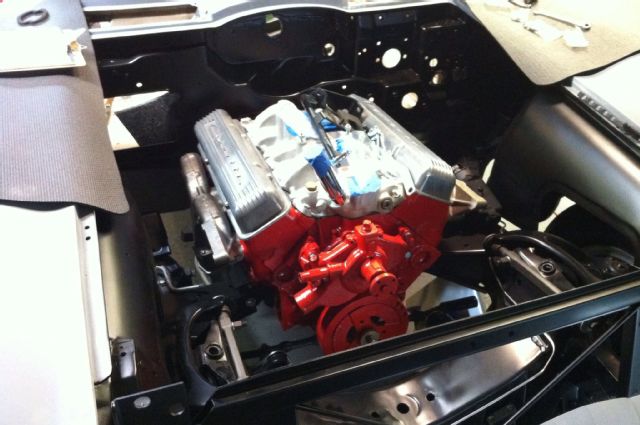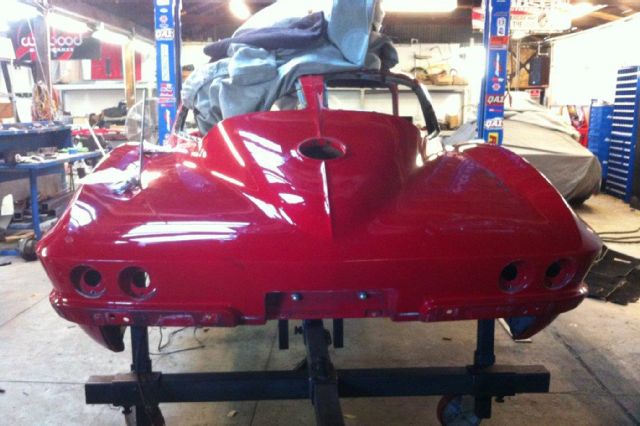
by John Gilbert as republished from SuperChevy.com
1963 Sting Ray a Split-Decision
Dateline October 2015: The expression hindsight is 20-20 takes on a completely different meaning when the subject is being able to obtain a totally un-obscured rearview from a 1963 split-window Corvette. This is going to sound strange to younger readers or older ones that weren’t into Corvettes back when the 1963 Sting Ray coupe was introduced, but one of the biggest complaints was the obstructed rear view caused by the split rear windows, and consequently kept the ’63 split-window Corvette as the least desirable model of the ’63-67 run.
In 1964 the split rear windows were eliminated in the Sting Ray coupe and split-window eliminator kits soon appeared on the market. Beyond the split-window eliminator crowd, the ’63 coupe did have a loyal following. Such was the case for George Barby of Livermore, California, a kid at the time he remembers when the model debuted and he swore one day he would own a ’63 split-window Corvette. George now owns two ’63 split-window coupes.
Ultimately George did acquire a 1963 Corvette Sting Ray split-window coupe, or as we used to call what’s now referred to as a C2, simply a Sting Ray. The newspaper ad shown here is the actual newspaper page George found his ’63 Sting Ray through.
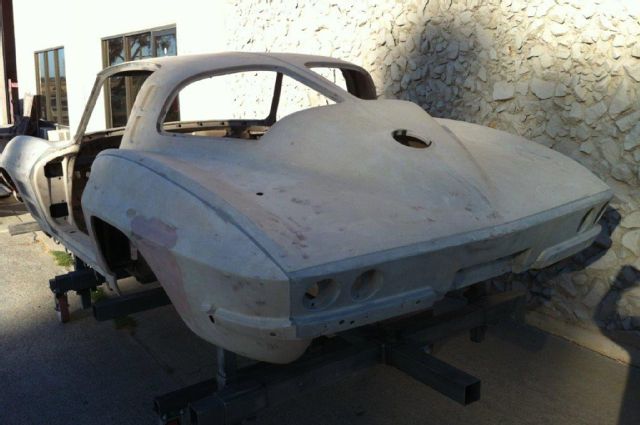
Since the Corvette’s earliest days there’s always been a used Corvette specialist somewhere in the US. In the ‘60s up until the late ‘80s there was Nero Corvettes in Westminster, California; Cooper’s Corvette Center founded in 1969 is still in Knoxville, Tennessee, going strong; and for George it was California Corvettes in Milpitas, California.
George daily drove his ’63 Sting Ray for over twenty years before he decided he’d like to blow it all apart and do as close to an NCRS restoration as he could stand. When it comes down to the real nitty-gritty of restoring a Corvette back to exactly as how it left the factory, a car might not necessarily be what the owner wanted. George said he knew he’d get nicked a few NCRS points for installing Dynamat, but he wouldn’t own a car without it. And of course Dynamat is like underwear, few people will get a chance to see it.
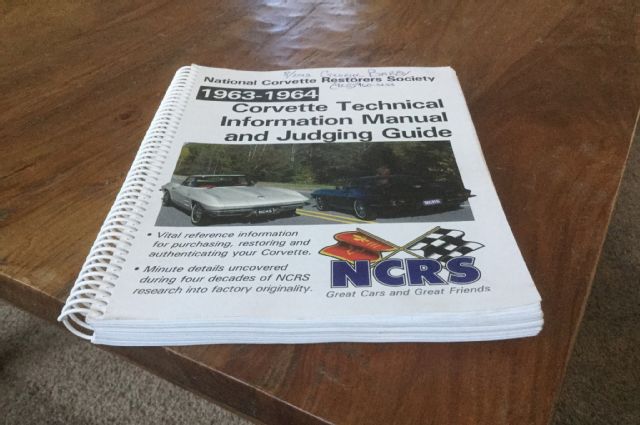
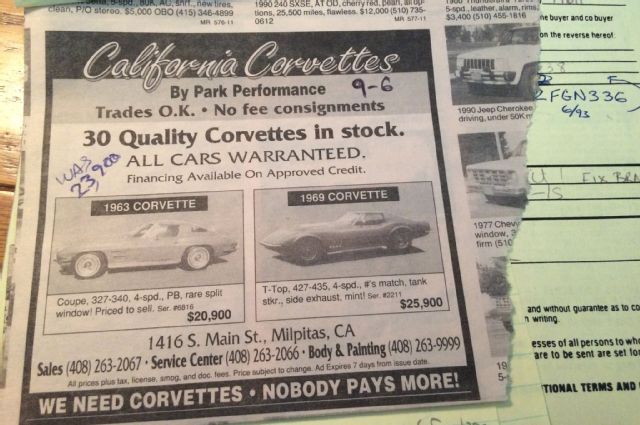
Take a look at the frame rails exposed under the ’63 after it got back from paint and you’ll notice George has replicated the factory markings. Look at the photo of the ’63 body stripped to the bare fiberglass and you’ll see the top gelcoat is white in color. This white color was on 1963 and ’64 Corvettes only according to the research George found.
The 340hp 327 with a 4 speed transmission that came with George’s ’63 was sent to Shaver Specialty Co. where the engine was blueprinted and dynoed at almost 400hp with 370 lb-ft of torque. Not bad for an engine that appears to be totally factory correct.
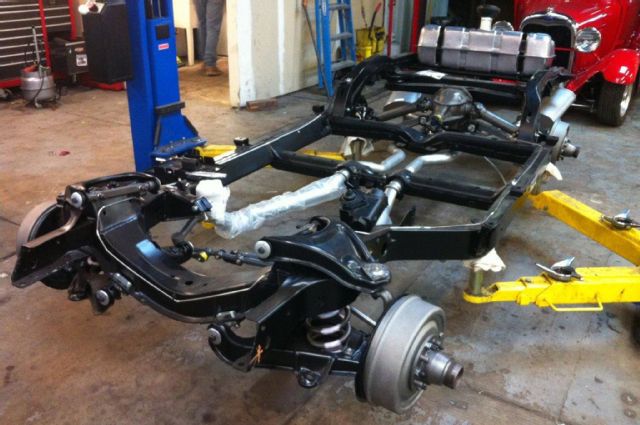
Some of the trials and tribulations of restoring any car can be dealing with the subcontractors one has to deal with. Often when a car is out for paint its known as a paint prison, and so it goes down the line. When it came time to restore the stainless steel molding around the rear windows George took all the six molding pieces to a stainless trim specialist for an estimate and the guy lost one of the small corner pieces. George didn’t say if the errant trim beater paid or it was out of pocket, but it cost $450.00 for George to replace a little 3-inch long corner piece.
